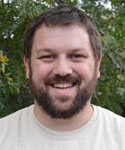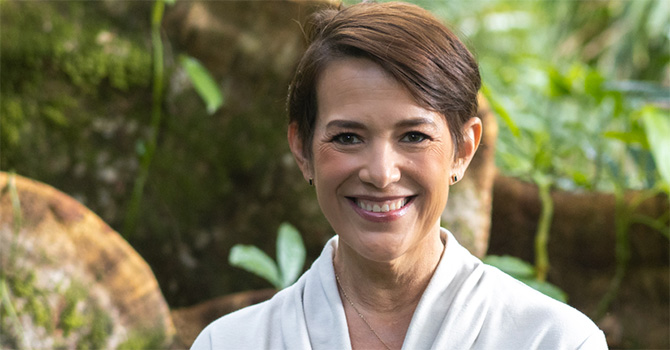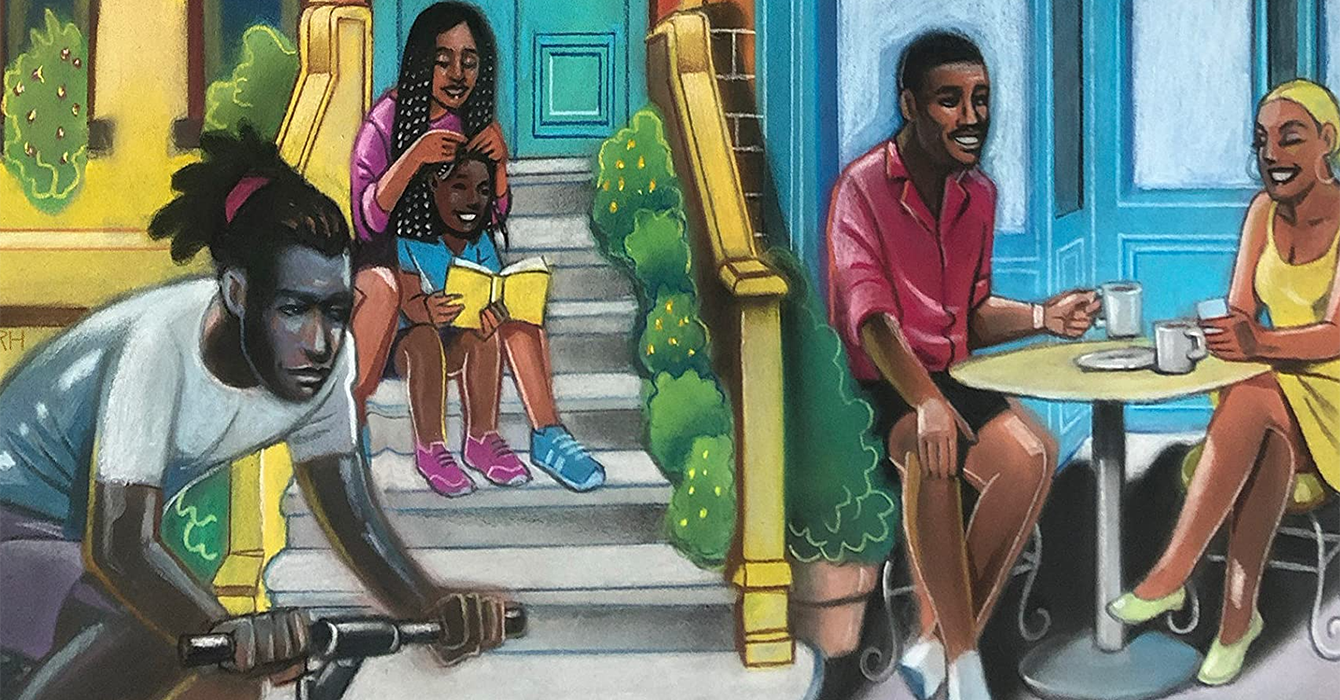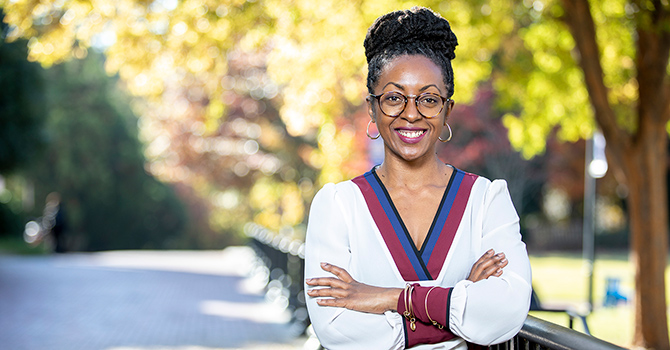Clang. Clang. Clang.
The hammer hits its target on the anvil, the red-hot metal glowing in the evening light.
One swing at a time, the blacksmith turns the gun into a spade. At another tour stop, he’ll turn a gun into a mattock. Death to life.
Shane Claiborne and Michael Martin, the authors of “Beating Guns: Hope for People Who Are Weary of Violence,” are inspired by the prophets Isaiah and Micah: “They will beat their swords into plowshares and their spears into pruning hooks. Nation will not take up sword against nation, nor will they train for war anymore” (Isaiah 2:4; Micah 4:3 NIV). Micah continues: “Everyone will sit under their own vine and under their own fig tree, and no one will make them afraid” (Micah 4:4).
“Most people want to see a change in the gun laws,” Martin said. “Because we engage it as both a gun and a heart problem, we’re engaging their language as well. We need to figure out how to disagree with each other, and do that without threatening each other. When we gather around the anvil, that invites all of those perspectives to have a place at the table and share their hearts.”
Martin is the founder of RAWtools Inc., a project that turns guns into garden tools and works to find safe and productive ways to dispose of firearms. He teamed up with Claiborne, an activist, author and speaker, to write the book and tour the country spreading the word.
The 37-city Beating Guns tour began March 8 in Philadelphia and wrapped up April 18 in Rochester, New York.
Claiborne and Martin spoke with Faith & Leadership about societal change, hope and activism. The following is an edited transcript.
Q: Tell us about the development of the book and the tour project. How did you realize that this was something you were called to do?
 Martin: RAWtools started about six years ago, after the Sandy Hook shooting. That’s also about the same time Shane and I started working together and turning guns into garden tools. That’s what RAWtools regularly does, and we team up with Shane a handful of times a year, too. Just through working together that often, we came up with the book as a way for us to share our stories together and really invite people into a different conversation than what’s happening.
Martin: RAWtools started about six years ago, after the Sandy Hook shooting. That’s also about the same time Shane and I started working together and turning guns into garden tools. That’s what RAWtools regularly does, and we team up with Shane a handful of times a year, too. Just through working together that often, we came up with the book as a way for us to share our stories together and really invite people into a different conversation than what’s happening.
Instead of polarizing people, the book is one way of us saying that it’s a gun problem and a heart problem, and we want you to listen to these stories and kind of see how America got into this situation.
 Claiborne: We had seen a lot of really powerful books that look at the history of guns, and some even about the theology of violence and nonviolence, and books on idolatry. But we had seen few books that put everything together, especially along with stories and images. [Our work] is also about hope, and we felt like we really needed a dose of that in the midst of the crisis that we’re in.
Claiborne: We had seen a lot of really powerful books that look at the history of guns, and some even about the theology of violence and nonviolence, and books on idolatry. But we had seen few books that put everything together, especially along with stories and images. [Our work] is also about hope, and we felt like we really needed a dose of that in the midst of the crisis that we’re in.
So we launched a 37-city tour together by chopping an AK-47, which was the first gun that was donated in Philadelphia and the first gun that Mike had worked with at RAWtools in Colorado. We found that to be meaningful, so we’ve been traveling with the two halves of that gun around the country, and since then we’ve had dozens, probably hundreds of guns that have been donated and worked with.
Martin: Each town is connected to each other by the tools that we make as we go along. We might get a gun donated at Stop 1 and start making that tool, and then finish it at Stop 2, and the people at Stop 2 are helping us start the tool to be finished at Stop 3, so there’s this beautiful chain that is being created with these tools as we go across the country. It shows how gun violence has a ripple effect, because it connects to each community. The tour has become an excuse for people who have been affected by gun violence to get together, share their stories and allow the local people to support and plug into other organizations and people doing on-the-ground work.
Q: What are you doing with the tools that are created on the tour? Are they being sold on the RAWtools website?
Martin: The tools are being donated to somebody who shared their story with us on the tour or to local community gardens or the church or person that donated the gun. So they’re staying in the community that they came from. There are other tools that we made before the tour that we’re selling on the site, but the tools that we’re making on the tour from the guns that are donated on the tour are staying in the town that they came from.
Q: There are people at the events who speak up about the violence they’ve experienced via guns. Are they people you find in the community, or do those people tour with you?
Claiborne: It’s a combination. We’re really relying on the local host city, and all the folks organizing around gun violence there, to help us with finding guests and speakers. It’s most powerful when we have the voices of that particular community there, as well as a gun from that community.
There are a few folks, for instance, that we write about in the book or that are close friends of ours that we’ve had as guests in multiple cities or brought on the tour. One fellow in Hesston, Kansas, had been shot four times with an AK-47, and when he told his story, it wasn’t just about his survival, but it was about his heart and conscience around guns, and his faith.
We’ve featured folks that have been affected by suicide, by trauma from war and military service. One of the things that we point out is that guns don’t discriminate. They kill police officers, activists, Republicans and Democrats -- so we’ve tried to have really diverse voices around the country, and whenever possible, the voices of the particular community that we’re in.
Q: There are so many stories of gun violence throughout American communities. How did you develop the narrative of the book?
Martin: We really tried to follow the process of turning a gun into a garden tool. We look at the state of guns in America, and then we begin to offer a way to transform the tools and the culture, and then we lead to a place of hope. The book has a heaviness in the beginning, but it slowly leads us toward a more hopeful place and alternatives to solving conflict violently. We tell stories of people who have experienced restorative justice and have made a 180 in their life. If they had a violent past, we show that there are options -- that they don’t have to always rely on a gun as the ultimate problem solver.
Claiborne: The book starts around the section we call “The Mess We Find Ourselves In” and ends with the hope that we can transform metal and the world. There are some people who come to our events very hopeful, and other people who come very tired. We try to meet them where they’re at and continue to stand on the promise that swords can be beaten into plows. As we’re transforming a gun every night, that’s one of the things you feel -- we start in the grief and lament, but we end on a note of hope.
As we started this tour, we were already several cities deep and then the New Zealand tragedy happened. We actually beat the gun barrel 51 times that night to remember the lives that were lost in that shooting. We also watched as, in a matter of a week, their entire country rose to the occasion to make concrete change for gun laws. That is inspirational, and I think a reality check for our own politicians, too.
Q: The back of the book says, “The world doesn’t have to be this way.” What is your eventual goal for this project?
Martin: One of the things we’re building is a disarming network that allows people to disable their weapons and have them turned into garden tools. We want to connect them to nonviolent resources, justice training, mental health first aid -- not necessarily prescribing solutions but allowing people to see the options that are before them as a different way forward.
Claiborne: That’s a really concrete goal of RAWtools that doesn’t exist right now. There are 300 million guns or more in our country, and we need to have a place where people can safely dispose of them and make them inoperable, and also see them repurposed into something life-giving. We’ve got another blacksmith that we’re traveling with right now who is based in Seattle, and he is the RAWtools chapter in the Northwest. That’s what Mike has been building -- a kind of network around the country where people can donate guns, and then blacksmiths who can repurpose the metal.
For some of our larger goals, we’ve been less prescriptive and more provocative, to stir people’s hearts. You could get rid of every gun in America and we could still find ways to kill each other, and no law is going to change a racist or hate-filled heart. But we have to do better at protecting people rather than protecting guns. We’ve had a lot of people participating in our event that are gun owners against gun violence, or hunters against assault weapons. That’s been really encouraging.
Some of it is beyond policies, too. It’s access to information or life-saving technology. Guns could, for example, operate off fingerprints to where if a child finds it or someone steals it or is seeking to commit suicide, it would make it harder to operate those guns in a deadly way. So we’re not going to save all lives, but we’re convinced that we can sure save some.
Q: Mike, what was the moment that you knew you wanted to pursue blacksmithing for this project?
Martin: The idea for RAWtools formed somewhere around 2010, and then the Sandy Hook shooting happened at the end of 2012. My wife is a first grade teacher, and the amount of kids that died that day was the same amount of kids that happened to be in her class. So that was the event that brought it into our world. Up until then, we were trying to figure out how we were actually going to do the physical transformation of guns into garden tools. We met a friend who was a blacksmith since he was 14, and we went out to his shop one afternoon. He showed us how to do it, and it was a lot easier than what we imagined.
At the same time we saw that it was easy for us to learn, we saw that it was going to be easy for us to invite other people into the process, too. Our blacksmith says, “If you can hammer a nail into a wall to hang a picture, then you can learn how to blacksmith.” It’s really beautiful to think about how blacksmithing operated 400 years ago -- if your tool broke, they fixed it. And so one of the things we do at these events is surround the forge with the concerns of the audience’s heart. If something is broken in our society, we can bring it to the anvil and to the forge and offer it for transformation -- not only just the gun, but our communities.
Q: How have both of your theological backgrounds been influential for this project?
Martin: For me, I grew up in a Mennonite and Baptist home, and I attended a nondenominational evangelical church. So I’ve had a foot in two different kinds of places through most of my life, and the nonviolence has always been a part of how I grew up and interacted with the world. The formation of RAWtools came from seeing a country that has turned the gun into an idol -- how we revere it and worship it in many ways. Nonviolence and my Anabaptist faith played a real cornerstone [part] in developing it.
Claiborne: For me, it’s a little different. I grew up in the Bible Belt with guns everywhere and a military dad. So much of our culture held together God and guns and the American flag and the cross. I found that the issue of idolatry also came about in my life.
Consider the words of Warren Cassidy, who was an executive in the NRA. He said, “You would get a far better understanding if you approached [the NRA] as if you were approaching one of the great religions of the world.”
That kind of idolatry is not just about the anti-God; it’s about the almost-God. It’s attributing God-like power to something that is not God. Mike and I often say that when you look at the gun and you look at the cross, they give us two very different versions of power and what power looks like. One says I’m willing to die, and the other says I’m willing to kill. You can’t follow Jesus’ command to love your enemy and simultaneously prepare to kill them. Theologically, we want to be driven more by love than by fear.











